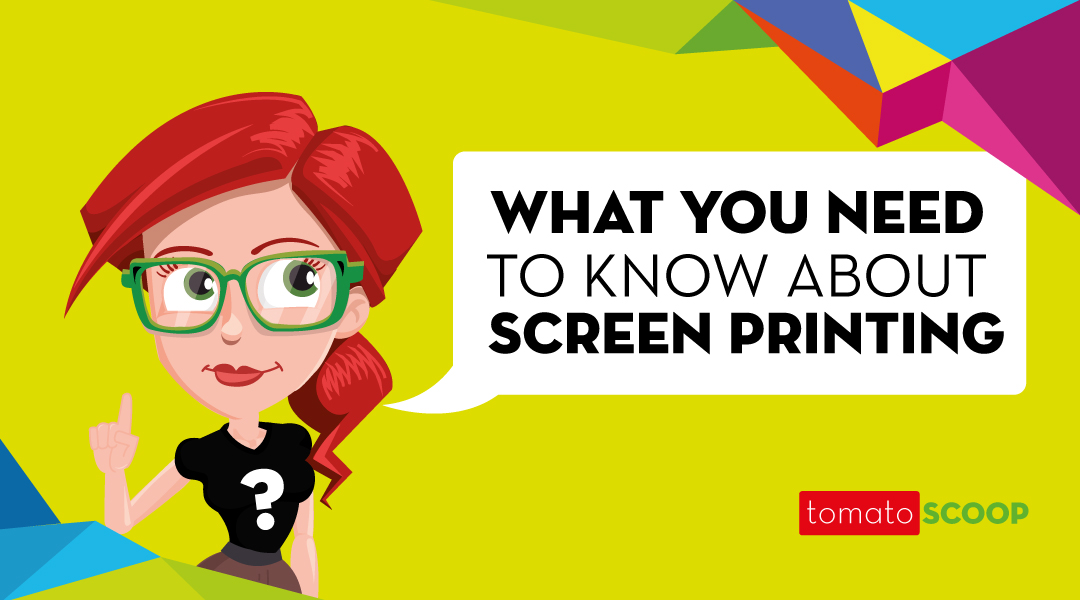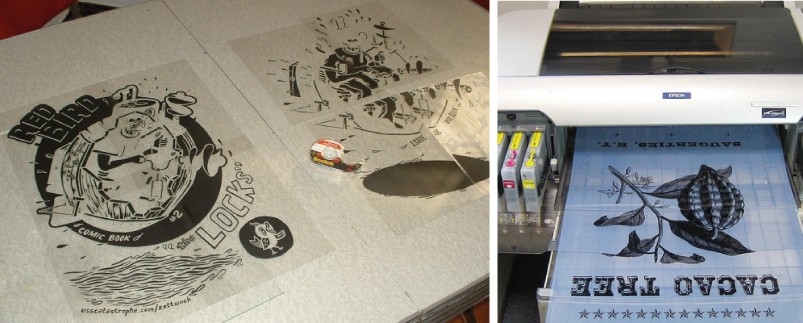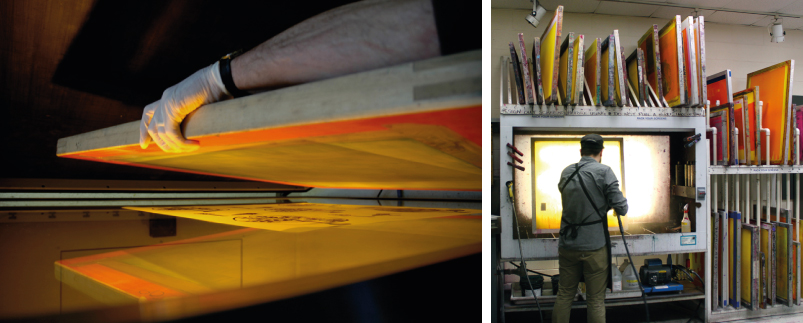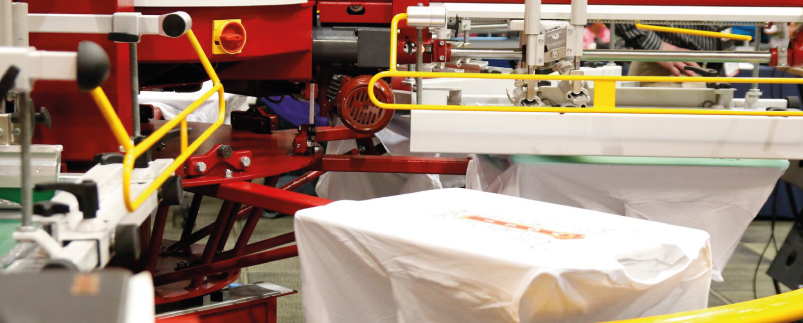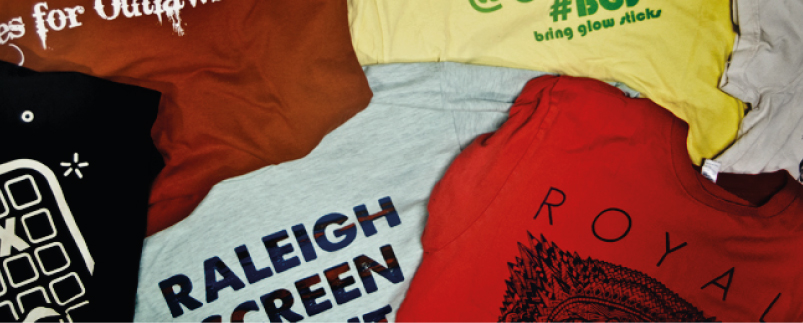Screen printing is one of the most common decoration techniques in the world of promotional merchandise. It provides a great quality print at a cost effective price. It can be hard to execute a great screen-printed product without the help of a professional – so we’ve compiled a list of pro’s and con’s to help you out. To fully understand the positives and negatives of screen printing, you first need to know how it’s done:
First, films are created from acetate with your design or logo
Firstly, vectorised logos are separated out into colours and then printed out onto an acetate film by a special printer that creates a stencil for the design to be transferred onto the screens.
Next, the screen in screen printing!
The screen printing frames are lathered with an emulsion substance in preparation for the transfer of the design from the films. Guides are marked onto the frames to ensure the accuracy of registration of the design, this is super important especially for multi-coloured jobs (note: individual films and screens are required for each colour in a design). The screens are then secured into position with the acetate films and exposed to light. By exposing the acetate film to light, it will burn a series of small dots in the shape of your logo. this allows the ink to sink through the mesh-like fabric of frames onto the merchandise.
Now, the promotional item – let’s say a t-shirt is positioned flatly onto a stand, with the personalised screen on top
Using a wooden squeegee, ink is smeared over the screen allowing your logo to seep through onto the t-shirt.
The printed fabric is then heat-cured, allowing the ink to stabilise
Voila! Now that we know how screen printing is done, we can consider the various factors that come into play when using screen printing as your decoration method of choice.
Let’s start with the positive aspects of screen printing:
For large batches of merchandise, this method is definitely the best option for you. It’s much easier to repeat the same design in large quantities for a screen printer. As you’ve learnt above, setting up the screens is a time consuming process. So the more items they can print on, the more time effective it is for the decorator – hence a cheaper cost.
Screen printing is a great high quality print. The ink used will really stand out on your merchandise. Keep in mind that some designs will need a base colour as well, so liaise with your promotional products agency on this. It’s also easy to create fantastic stand out designs to print onto your merchandise. Check out our infographic below for our tips on designing a screen printed t-shirt.
As much as we love screen printing at Red Tomato, we have to come clean about some negative aspects as well:
If your logo has multiple colours or gradients, then screen printing probably isn’t the best option for you. As mentioned above, each new colour requires a new screen to be set up, adding additional set-up fees to the job. It’s best to stick to one or two colours when screen printing to ensure the most cost effective price. If your logo has upwards of three colours we would recommend a digital print.
When screen printing onto merchandise, consider colour contrasts. For example, a black pen with a navy logo isn’t going to stand out much. Consult your promotional products agency for more advice about how to make your designs pop.
What have your experiences with screen printing been? contact us today! – we’d love to know!

